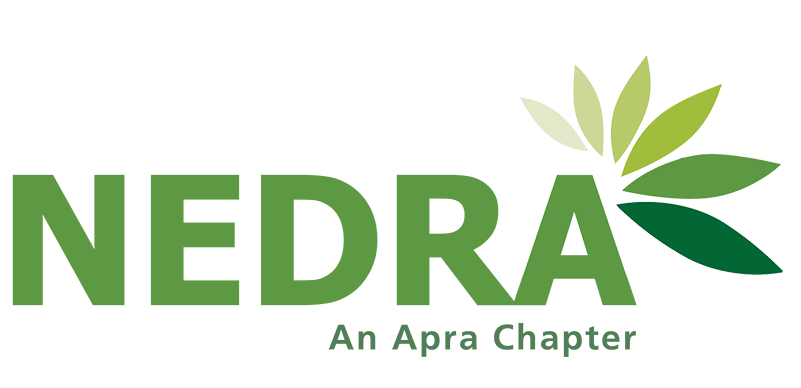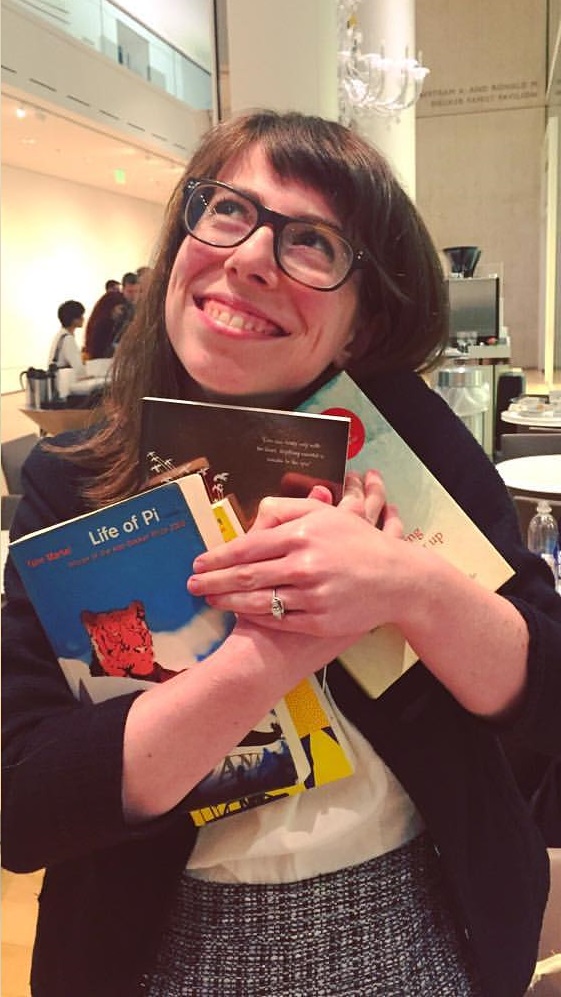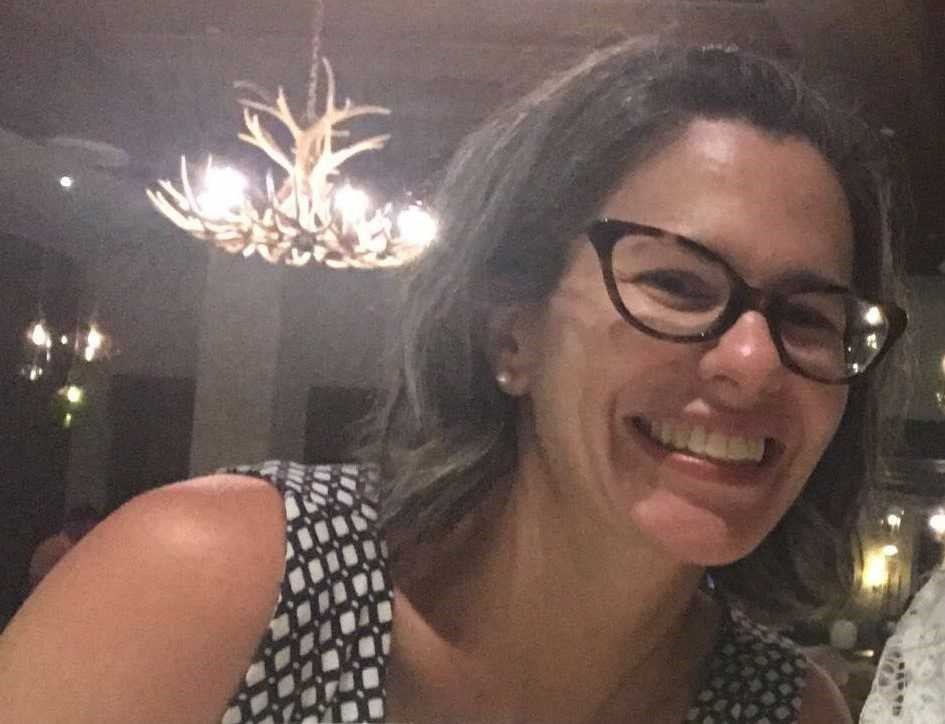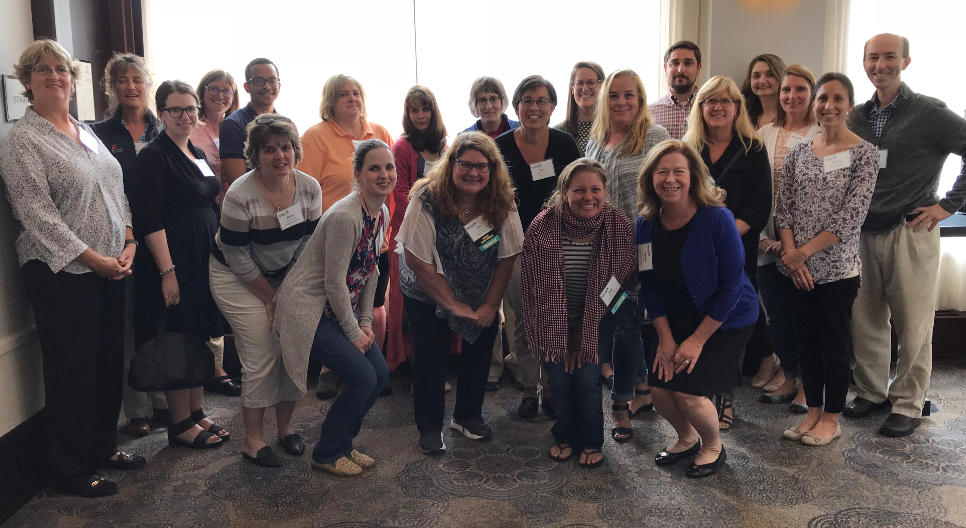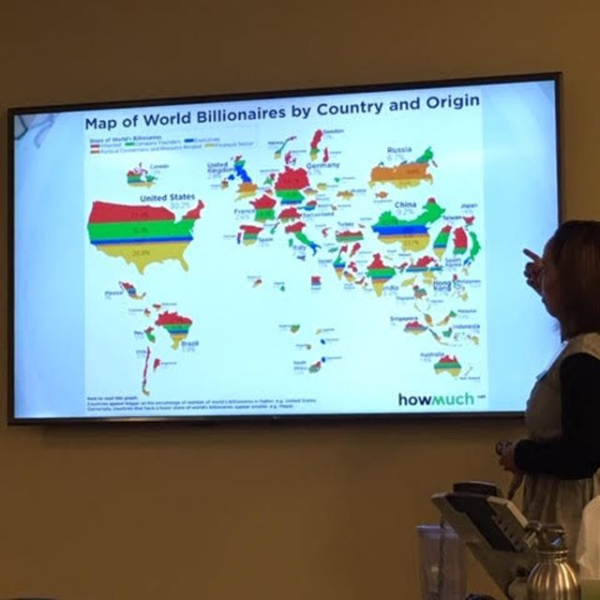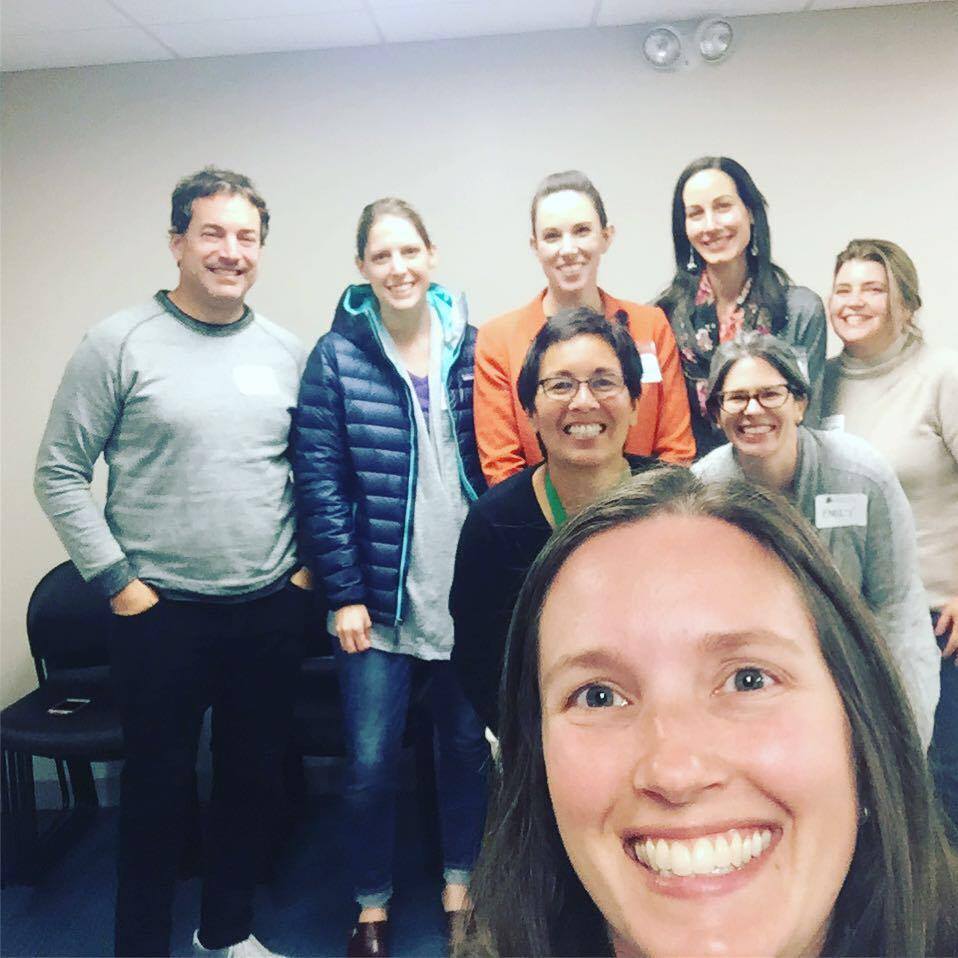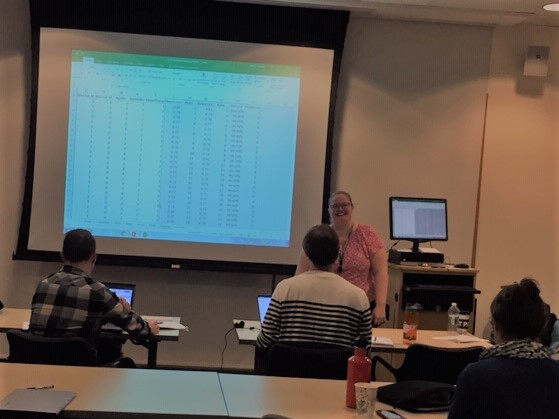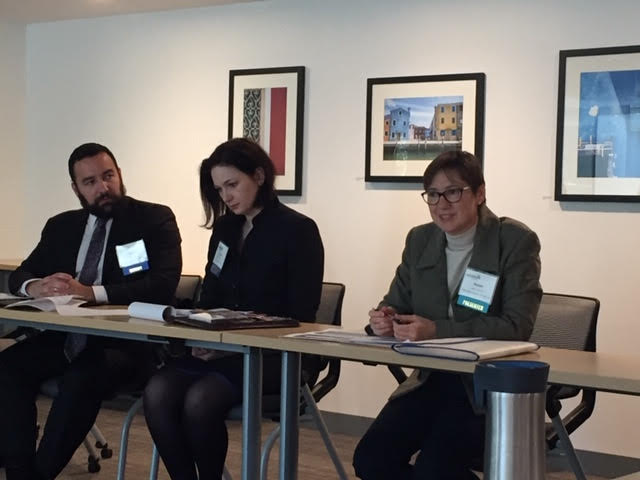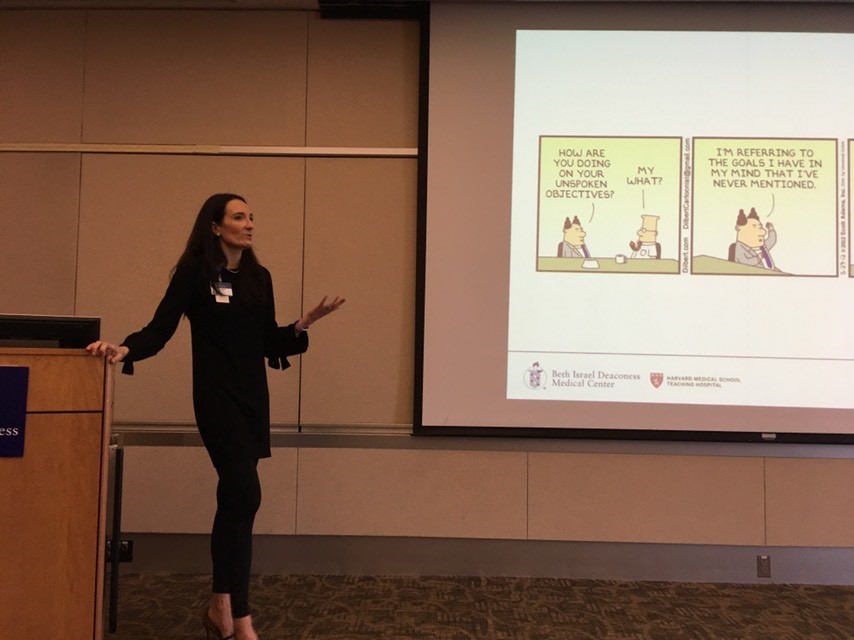NEDRA NEWS NOVEMBER 2018 Amitha Vasanth, Director of Prospect Management, Research and Analytics, Babson College You just got a new position! Congratulations! How has the transition been? Having worked at my previous employer for quite some time, I had forgotten how difficult it is to re-learn the same tricks in a new environment. The first month in my new role has felt like trying to take a sip of water from a fire hose. But having a transition plan, aligning tasks from the plan to the goals of the office, and more importantly having wonderful colleagues that are open to answering all my questions have made the transition smooth. If your job gave you a surprise three day paid break to rest and recuperate, what would you do with those three days? Since taking on the new role, I have missed out on doing small things with my kids - drop and pick them up from bus stops, read books and play board games. I would spend most of the time doing these little things with my family. Rest will be dedicated to cleaning and organizing my house, reading and taking naps. What's an accomplishment you are most proud of so far in your career? In my previous role, I initiated the conversation on prospect management to prioritize prospects and ensure the best prospects are cultivated. In order to build a sophisticated prospect management system, I dedicated time to learn the best practices in the industry, understand the challenges involved during implementation and have a detailed understanding of the fundraising database. This was followed by many days (and even late evenings) of meetings with the leadership to understand the reporting needs. Ongoing tasks included writing and re-writing/editing policies and procedures to meet the needs of the office and working closely with the database analyst to build reports. Lastly, I organized multiple training sessions with the development officers and the other staff in using the newly implemented prospect management system. What do you love most about prospect research? In the last 13+ years of working as a prospect researcher, I have always learnt something new every single day - be it about an individual, an industry, a foreign country, a fundraising database, data analysis techniques - the list is never ending. Will you be attending #NEDRAcon2019 in April 2019? What are you most looking forward to? Yes! NEDRA Conferences are always exciting and inspiring. Apart from the presentations on prospect management and predictive analytics, I am looking forward to the pre-conference workshops on fundraising data science. Have you ever hosted or participated in a NEDRA program? If so, would you share any meaningful information you received from the event(s)? I hosted two NEDRA programs in the past: Prospect Management Panel and Resource Refresh. During the prospect management panel, there was a discussion on identifying key data points to report to the leadership. My co-panelist Ruthie Giles from Mount Holyoke College reminded the attendees that the frontline fundraisers are not usually aware of what data can be tracked and reported. At times, it becomes the responsibility of the researchers to educate the fundraisers or the leadership about prospect-related data. Resource Refresh was an interactive session with attendees sharing their favorite resources - both paid and unpaid. Apart from the many resources shared, the two unpaid resources for researching wealth managers - Investment Adviser Public Disclosure (SEC filings) and Wall Street Oasis (for compensation) - have been very helpful. What is your favorite thing to eat for a workday lunch? Fresh mozzarella and pesto sandwiches made by my husband are my favorite! Any advice to new prospect researchers? Take time to know your institution, the donors and don’t be afraid to look into data. How has the prospect research field changed since you started out as a researcher? Prospect research used to be very reactive and was focused on providing the information that the fundraisers needed. In the last few years, prospect research has shifted gears where researchers have taken on the role of increasing efficiency of the office, especially the frontline fundraisers, through data analysis.
You just got a new position! Congratulations! How has the transition been? I had worked at the Museum of Fine Arts, Boston for four years, and perhaps I took for granted that I knew my way around and recognized all the faces of my colleagues! It has been challenging trying to familiarize myself with a new building, a new set of processes and databases, a new commute, and new coworkers. However, everyone I have met so far has been so welcoming and I have been getting up to speed with the work, so overall, the transition has been great! What onboarding technique have you found especially helpful so far? I have been set up with a “welcome buddy” at Dana-Farber: someone who is in a separate program area in Development who will answer any questions about DFCI. It’s also helpful to get to know someone in a different part of Development; the department is huge at Dana-Farber, so it’s difficult to get to know everyone! This onboarding technique helps. How did you find yourself in Prospect Research? I began my career in prospect research when I decided I wanted to flex my research skills for a cause that I cared about. Since I was an art history major in college, I started out doing prospect research for an art museum (without knowing exactly what it entailed). Thankfully, I very much enjoy prospect research! What is your favorite part about your job or where you work? It’s wonderful to work at Dana-Farber, which is so prestigious and doing amazing work in cancer care and research. What is your new go-to spot (restaurant, store, etc.) you’ve found while exploring your new area? Hard to believe, but already, it’s a tie! I have been making frequent coffee stops at Kookoo Cafe, and slowly working my way through the sandwich menu at Cutty’s. Have you ever attended and/or participated in a NEDRA program? If so, would you share any meaningful information you received from the event(s)? I have attended several NEDRA programs, including a Research Basics boot camp, real estate research program, and a hiring/getting hired panel. I have also attended NEDRA conferences for the past two years, and at all of these programs, I loved learning about new resources that I could use to find the answers to research questions. What topics are you interested in learning more about or focusing on as you continue down your career path? I am interested in learning more about data analytics. It is something I do not know much about, but definitely seems to be at the cutting edge of the field. It’s going to come into play much more in the near future. If your job gave you a surprise three day paid break to rest and recuperate, what would you do with those three days? A three day break! I would most likely visit my family in New York and New Jersey. Will you be attending #NEDRAcon2019 in April 2019? What are you most looking forward to? I do plan to attend the NEDRA conference in April. Beyond learning more research tips and tricks, I am looking forward to meeting up with previous colleagues, people who I met at prior NEDRA programs, and new folks who I have not met before. Have you recently received a promotion or accepted another position? Share your career move with us! Email us at cmoitra[at]risd[dot]edu so we can feature your news on the NEDRA home page! ADV Filings: The Basics By Dave Owens, Senior Prospect Researcher, Boston Children’s Hospital Trust Introduction: When researching a prospect or donor that is managing director/partner or senior executive at an investment firm, you confront the following questions: How large of an investment firm is their employer? Do they have an ownership stake in the firm, and, if so, how significant is their direct stake in the company? What is their client base? What type of investment advisory firm are they? Are they a hedge fund? What is their fee structure for compensating the firm’s owners/partners? The article will review how to find essential information on an investment firm that files an ADV form. Best of all, the annual disclosure forms are free to search and review through an SEC-related website. An ADV filed with the U.S. Securities and Exchange Commission (SEC) can shed light on answering such questions. The filing provides a wealth of information on an investment advisory firm. Several elements of this SEC filing are valuable to prospect research, including: the firm’s assets under management (AUM), types of investments, management and performance fees, and even the ownership structure of the company. What investment firms are required to file an annual ADV? The ADV is officially known as the “Uniform Application for Investment Adviser Registration and Report by Exempt Reporting Adviser” (Source: Investopedia.com), and is “used by investment advisers to register with both the Securities and Exchange Commission (SEC) and state securities authorities.” (Source: SEC.gov). It is a required submission by the SEC for a professional investment advisor to specify the investment style, assets under management (AUM) and key officers of the firm. A company managing over $25 million must update the form annually, and the form must be made available as public record. (Source: Investopedia.com) An amendment to the annual filing is required for any changes in ownership, investment strategy, or management and performance fee structures at the firm (Source: SEC.gov). How to Find an ADV form: To search for an ADV filing, one must visit the SEC’s Investment Adviser Public Disclosure (IAPD) website, located at https://www.adviserinfo.sec.gov. When you reach the main page of the IAPD website, there will be a field to search by the investment advisory firm name, or search by registered individual name. When the name of investment firm surfaces, click on the “Get Details” box to the right of the search result to open the company’s most recent ADV filing. Once I find an ADV filing, what do I look for? Part 1: The Investment Advisory Firm’s Structure: Once you discover the investment firm has an ADV form, you will notice the filing is in two sections. Part 1 of an ADV is a formal SEC filing that provides the following information about the investment firm: “Part 1 requires information about the investment adviser’s business, ownership, clients, employees, business practices, affiliations, and any disciplinary events of the adviser or its employees. Part 1 is organized in a check-the-box, fill-in-the-blank format.” (Source: SEC.gov). To help locate specific sections of an ADV, you will notice a navigation bar to the left of the IAPD website that allows you to view the form by section. Beginning with Item 1, you will locate the date of the form’s filing in the top left hand corner of the first page. The introductory page will also provide the firm’s principal mailing address. When we go to Item 5 of the form, “Information About Your Advisory Business”, you’ll discover a firm’s number of clients and types of clients/investments (i.e. – high net worth individuals; pension and profit sharing plans; pooled investment vehicles such as hedge funds). Most importantly, Item 5 will include a disclosure of the total assets under management. Ownership Information: Schedules A and B in Part 1: To locate the ownership structure of the investment firm, search for Schedules A and B of the ADV form. The Schedule A section of the document discloses the direct ownership of the firm. Direct owners are defined as an entity that beneficially owns, has the right to vote, or has the power to sell or direct the sale of, five percent or more of a class of their voting securities (Source: SEC.gov). Schedule B reports the indirect owners in the investment firm. An indirect owner is defined as: a corporation, partnership, or limited liability company (LLC) where each of its shareholders beneficially owns, has the right to vote, or has the power to sell or direct the sale of, 25 percent or more of the securities of that corporation, or if the ownership is held in a trust. (Source: SEC.gov) Schedules A and B follow the same structural guidelines in reporting ownership. Item 6 provides a description of ownership codes which are demarcated by letter, ranging from NA (less than 5 percent stake), to Code E (75 percent or more). Item 7 presents a table of all reported owners in the firm by name, entity type, title or status, date of when their title/status was acquired, as well as ownership code. In Item 4, this section provides definitions of the types of owners: DE being Domestic Entity; FE is an entity that is incorporated or based in a foreign country; and “I” represents an Individual as owner. The DE and FE types are most often limited liability companies (LLCs); individual owners (I) are partners/managers at the firm with an ownership stake in the company. Part 2: The ADV Brochure Part 2 of an ADV filing is known as “the Brochure(s)”. The brochure (Part 2) is a more recent filing requirement, and is more narrative in nature than the regimented format of Part 1: “Beginning in 2011, Part 2 requires investment advisers to prepare narrative brochures written in plain English that contain information such as the types of advisory services offered, the adviser’s fee schedule, disciplinary information, conflicts of interest, and the educational and business background of management and key advisory personnel of the adviser.” (Source: SEC.gov). Exploring the brochure filing, we can find the history of the firm, reported assets under management, and who the principal owners are (Item 4); their management fee (Item 5) and performance-based fee structures (Item 6); as well as types of clients (Item 7). I hope this overview of ADV filings help you identify a prospect’s role in an investment firm. Good luck in your exploration! Elevating the Status of Qualification in Your Organization By Kristen Cocce, Associate Director, Prospect Management & Research Services, Lahey Health As a researcher, it is such a rewarding feeling when you identify a promising prospect. The prospect might have initially crossed your desk via an event briefing, a gift report, a screening – whatever the case may be – you’ve put in the extra work to determine that they certainly have the capacity and it’s very likely they have the inclination. You know that you’re on to something and declare a small victory for the day. As the newly identified prospect is given a status of ‘qualify’ and assigned into a major gift officer’s (MGO) portfolio, you tell yourself you’ll have to check back with the MGO in a little while to see what they thought after connecting with the prospect: Is the inclination indeed there? Was the prospect willing to meet with the MGO and discuss the organization’s fundraising priorities? Could this individual be a good prospect for the next big initiative? Weeks go by, projects and deadlines are added to your workload, and before you know it, months later you find yourself wondering, ‘What ever came of that prospect that looked so good so long ago?’ Qualification of new prospects is essential to the philanthropic lifecyle of our organizations. We as researchers can feed prospects into the pipeline as steadily and efficiently as possible, but how can we ensure that these constituents are actually going through the qualification process in a timely and streamlined manner? After more than a decade in the field, I have only recently discovered the benefits of implementing a Qualifier pool as a complement to an MGO’s Prospect Managed pool. By segmenting the two pools and reporting specifically on Qualifier pool activity, the Research team is able to consistently track whether or not prospects have been qualified within a given time frame. Integral to the process is defining what Qualification means to your organization and the appropriate amount of time by which a prospect is expected to be qualified. For example, Qualification can mean that the prospect has agreed to have a philanthropic conversation with the MGO, and the MGO should make outreach attempts to determine this within three months of assignment to their Qualifier pool. Once a prospect in the Qualifier pool is in fact qualified, they can then move into the MGO’s Prospect Managed pool to be actively cultivated, and eventually solicited and stewarded. To maintain that prospects in the Qualifier pool do not become stagnant or ignored - as perhaps those with a ‘qualify’ status may have a tendency to do in a standard portfolio, as those in ‘cultivate’ or ‘solicit’ inadvertently take priority - highlighting MGO activity as it relates to the Qualifier pool ensures that attention is justly given to the beginning stage of the major gift cycle. At Lahey Health, the Research team provides the Philanthropy Department’s management team with monthly reporting on all Qualifier pools, pulling on actions from the database to highlight prospects that have yet to receive personal, qualifying contact by an MGO. Qualifier reports further focus on the length of time prospects have been in this pool; while MGOs are encouraged to contact their Qualifiers soon after assignment, and certainly within 90 days to start, it is highly discouraged that any prospect be in this pool over one year. Monthly Qualifier reports produced by Lahey’s Research team support frontline leadership by creating accountability around MGO qualification, much like metrics surrounding visit frequency and dollars raised. Therefore, even more rewarding than finding a new prospect is assigning that prospect to an MGO’s Qualifier pool, seeing the MGO’s outreach documented and reported on, and eventually assigning that prospect to a Prospect Managed pool where cultivation and solicitation will inevitably take place. It certainly beats wondering! The Benefits of Presenting at a NEDRA Conference By Pamela McCarthy, Assistant Director, Prospect Management, Northeastern University It may be intimidating, but presenting is worth it. Whenever a researcher shows me a good strategy or system they created, talks about how they learned to work well with fundraisers, or talks about anything they are doing effectively, I say, “Hey! You would be great at the NEDRA conference! Or even a one-off event. I think people would find this so helpful!” (Look, I’m the treasurer of NEDRA and I feel honor bound to encourage people to present.) I invariably get an embarrassed laugh, or a look of horror. “No! Oh no! I don’t present! I don’t talk in front of a lot of people!” I get it. It’s intimidating to get up in front of a group of people to speak, let alone present on something to people who know their stuff. And you have to talk! To a roomful of people!! I am not going to fault anyone for lacking enthusiasm at the thought. I’m going to ask you to consider doing just that, and here is why.
Emily Burke, Research Manager at Covenant Health 2016 Helen Brown Group-NEDRA Conference Scholarship Recipient We caught up with Emily Burke, Research Manager with Covenant Health Systems, and the recipient of the 2016 Helen Brown Group-NEDRA Conference Scholarship to see what she has been up to since and learn how the scholarship has helped her in her career! Why did you apply for the Helen Brown Group-NEDRA Conference Scholarship? Given the lack of available professional development funding for our office, I would not have been able to attend the NEDRA conference without a scholarship. What did you gain as a scholarship recipient? With less than a year of direct experience in prospect research when I attended my first NEDRA conference, I soaked up as much information as I possibly could, and it was critical to my success in establishing a successful research program. However, it was the networking opportunities and professional connections that have continued to help me even two years later. What advice would you give to a researcher who is new to the field? Researchers are the most collaborative, helpful development professionals I've met - don't be afraid to ask for help or advice! What was a highlight or a lasting memory you have from your first NEDRA conference? It was the sense of community among NEDRA members and conference attendees that made an impression on me. The atmosphere was incredibly supportive, collaborative, and positive - definitely the most inspiring conference I have attended! How did you find yourself in Prospect Research? I had been working in development for a few years (most recently as a planned giving officer) but after having my second child I wanted to scale back my travel and work hours. A former colleague thought I would be a good fit for research and I dove in! My background in art history actually proved to be really useful in terms of research and writing. What is one of your favorite types of research requests to receive? Working in healthcare, we receive a lot of very heartfelt, unexpected gifts. It is incredibly rewarding to trace the story behind a grateful patient gift. Even more so knowing that my work will help to cement and deepen the relationship between an appreciative family and a hospital that is impacted by every gift it receives. Can you describe your participation in NEDRA since receiving the scholarship to attend the conference? I have attended two NEDRA conferences and a number of think tank and other training sessions. Most importantly, the networking and collegial support that NEDRA provided has been invaluable to my success. Whether I have a question big or small, NEDRA members never hesitate to offer advice, direction, and workable solutions. [Emily also volunteers as a committee member for the NEDRA Scholarship Committee.] Will you be attending #NEDRAcon2019 in April 2019? What are you most looking forward to? I am really hoping to attend, having the conference in Maine makes it much easier this year! While I always head into a conference with a plan to attend certain programs, I tend to heed the advice of other attendees who recommend speakers they know. With a dynamic speaker, no matter the subject matter, I know I will walk away having learned a lot! What do you do for fun when not at work? I love living in Maine! My family and I spend as much time as possible outside year-round exploring the coast, hiking, and skiing. Interested in learning more about NEDRA’s Scholarship opportunities? Visit our Scholarships page or contact Jenn Grasso (jenn[dot]grasso[at]tpl[dot]org) or Diane Parsons (dparsons[at]govsacademy[dot]org) to find out more.
Research Basics Bootcamp (9/7/18)
International Research: India (9/28/18)
Building a Major Gift Model Using Microsoft Excel (10/19/18)
GDPR Think Tank (10/26/18)
An Introduction to OKRs: How Operations Changed Office-wide Goal Setting (11/5/18) A special thanks to all of our presenters and attendees for great sessions! Making Wills Easier and Cheaper with Do-It-Yourself Options The Super-Rich Are Stockpiling Wealth in Black-Box Charities Alumnus Gifts $100 Million to Advance the Sciences The Art of the Giant Campaign A Global Share of Those Giving to Charity Fell in 2017, Report Finds Enjoy this heart-warmer by Helen Brown: Community 6 Dos and Don't for Fundraising Success this Giving Season Travis Roberts has started as a Prospect Management Analyst at Wheaton College in Norton, MA after working as a Senior Prospect Research Analyst at the University of Rhode Island (URI) Foundation in Kingston, RI. He began his new role at Wheaton on November 1st, 2018. Rebecca Zielinski joined Lahey Health as Assistant Director, Prospect Management & Research Services in October 2018. She was previously with Massachusetts General Hospital for over 9 years, having most recently served as Assistant Director, Prospect Research. Caitlyn O'Halloran started her role as Prospect Research Analyst at Lahey Health in August 2018. She previously worked in Quality Improvement for Spaulding Hospital Cambridge. Amitha Vasanth started her role as Director of Prospect Management, Research and Analytics at Babson College in September 2018. She previously held research roles of increasing responsibility at the University of Massachusetts Medical School since 2005. Lauren Casas joined Dana-Farber Cancer Institute as a Research Analyst in Prospect ID and Analytics in September 2018. She previously worked at the Museum of Fine Arts for 4 years, most recently as a Development Associate for Research. Congratulations to everyone on this list! |
